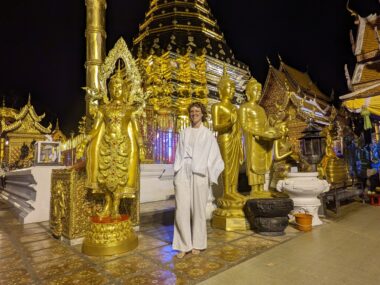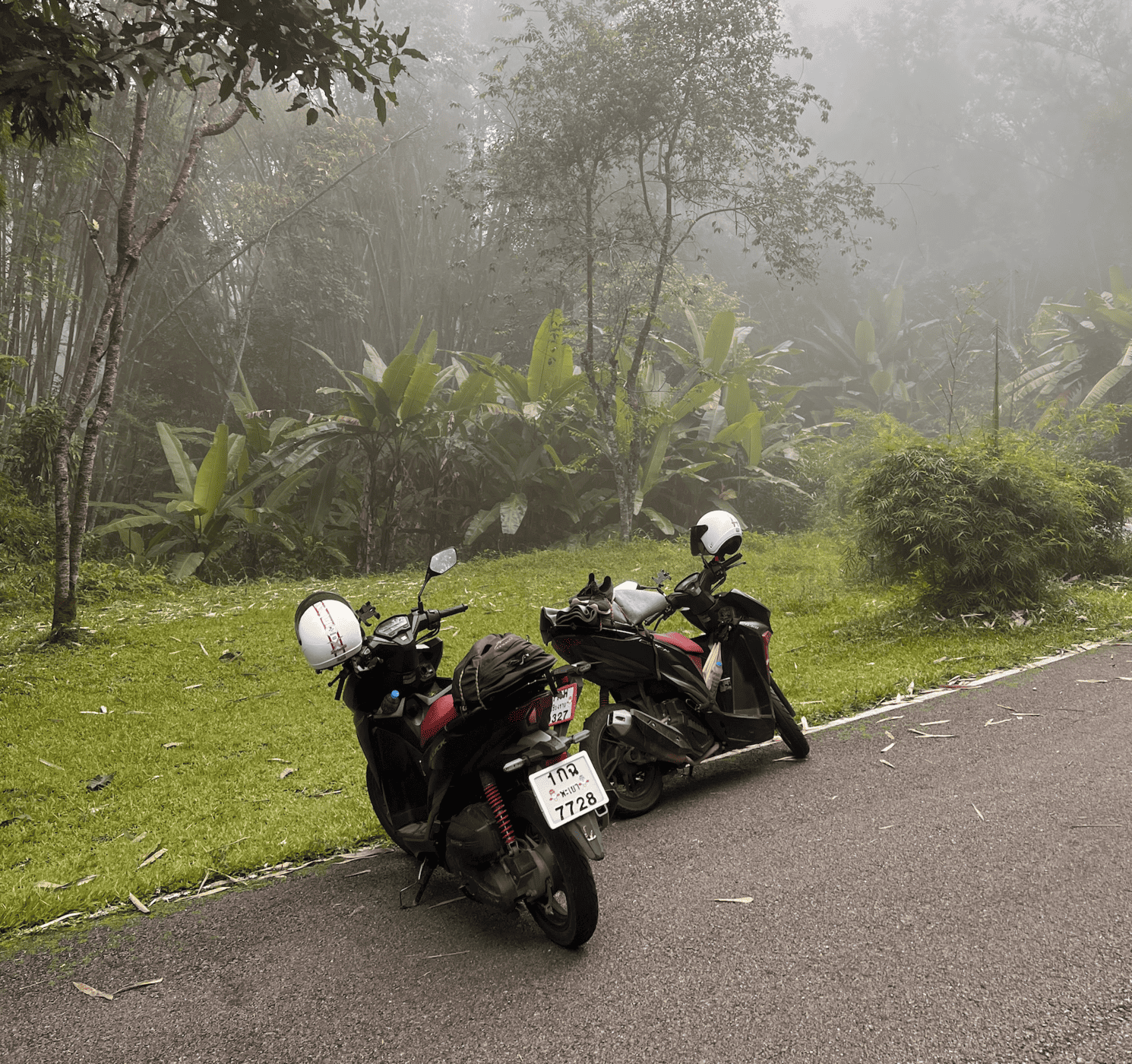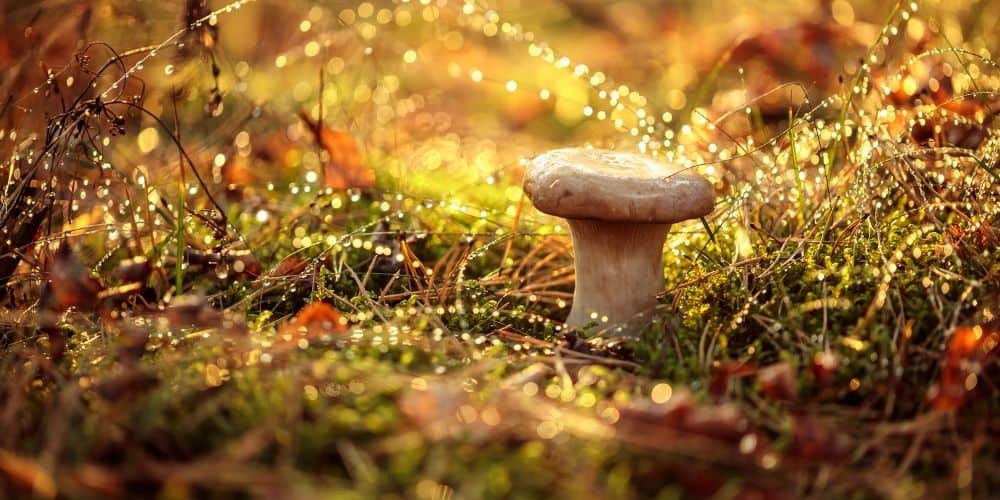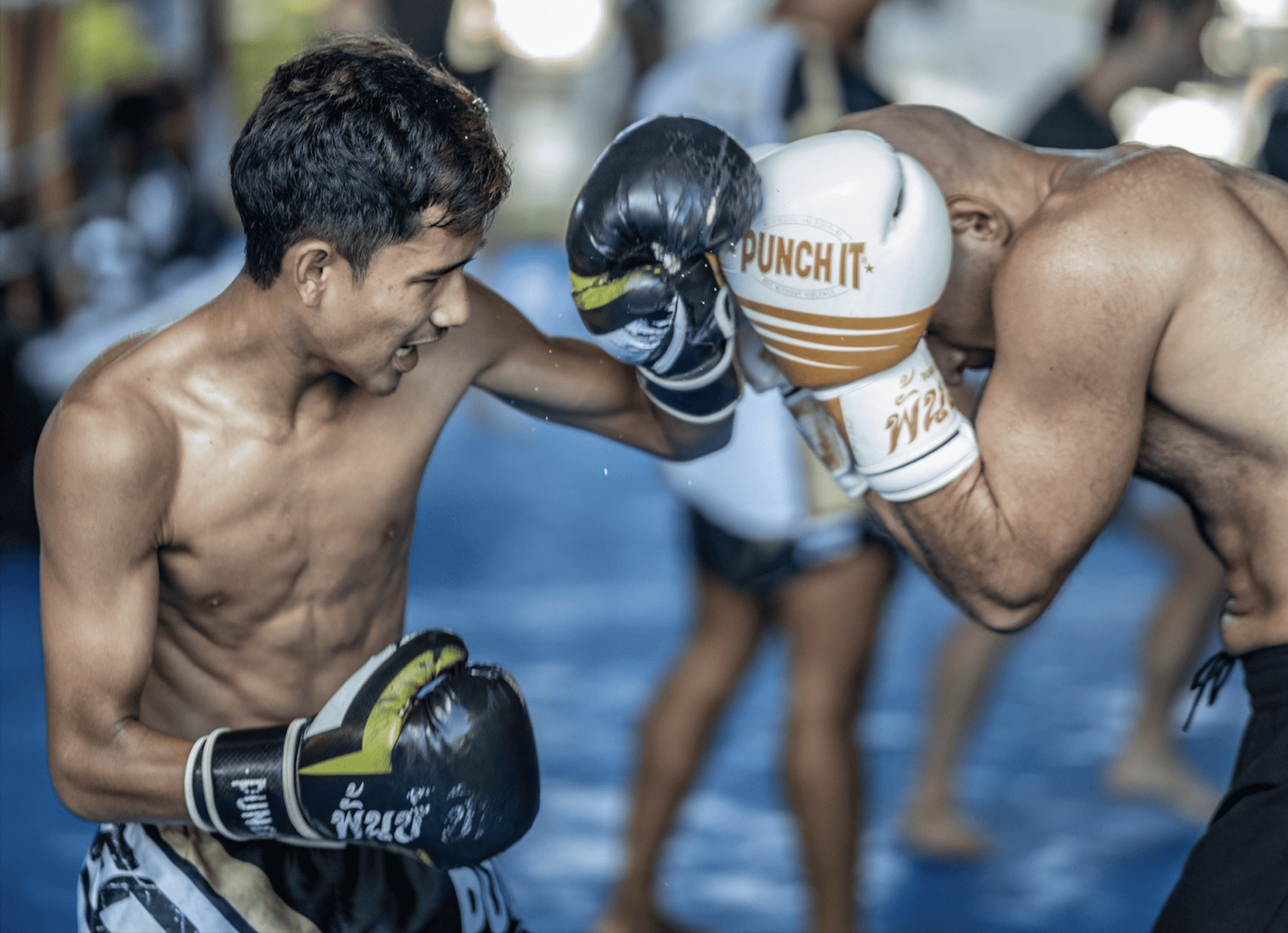Table of Contents
When I was 10 years old, my Mom wanted to move to Maine, and my Dad wanted to own a business. They both got their way. We loaded up our belongings and animals into a car full of chaos and left Kentucky behind.
My Dad hit the ground running with a new job, but he also spent the next year quietly searching for local businesses for sale. The top contenders soon emerged: A chocolate factory, and something else. He remembers something else as a printing factory. I remember it as a tampon factory. Either way, it was something less exciting than chocolate.
In fifth grade, I was shy, awkward, and dressed in Mom-sanctioned baggy clothing. I was not what they call “one of the cool kids”, so thank goodness my family ended up with a chocolate factory and not a tampon factory.
Everyone in town knew Haven’s Candies; it had been manufacturing handmade confections for nearly 100 years, and was the proud employer of the state of Maine’s only master candymaker.
The fifth grade hallway was in chaos when the news broke one day. Kids peered out of classroom doors, shouting down the corridor “I heard Caitlyn Charles’ family bought Haven’s!” and “no way!” and “Is it true?!” In an instant, I went from ‘awkward, uncool, and weird’ to ‘still weird, but also so cool by proxy’. And oh boy, did I leverage it.
I soon discovered that if I brought Haven’s products to school to share at snacktime, I suddenly had a lot of friends and attention, albeit temporarily. My eleven-year-old ego took that win and milked it for all it was worth.

Cacao Ceremonies
Ever since this childhood experience of interpersonal connection through chocolate, I’ve equated chocolate with social bonding – but I had no idea that there was any deeper historical or scientific precedent for that until I stumbled into an eco-hostel and permaculture farm on Ometepe Island, Nicaragua 18 years after my journey with chocolate first began.
There, I found a bunch of foreign and Latin American hippies doing what they called ‘cacao ceremonies’ – events where people sat in a circle, drank a strong beverage made from cacao , and did self-reflection and interpersonal connection activities. (Side note: I’m using ‘cacao’ to refer to the more minimally-processed product, and I’ll refer to the mass-produced stuff you can find in supermarkets as ‘chocolate’.)
But the crazy part of this? The premise behind these events was that cacao had psychoactive components that actually helped people feel good, open up, share, and drop into deep presence with each other. Umm…What?!
As I explored the island more, I found that this was actually not a niche thing, but a very popular notion. It seemed like everyone and their Mom was participating in or hosting these ‘cacao ceremonies’–and loving it. So, I decided to try it out.
To my surprise, the structure of the first couple of cacao ceremonies that I attended was coincidentally exactly the same as an event I was already hosting periodically: A speed-dating style sharing and reflection event in which participants discussed various self-reflective questions and prompts, like “tell your partner about a difficult time in your life and what you learned from it”, “describe your values in 3 words and explain why”, or “what do you think happens after we die?” and so on.
Everyone got a few minutes to speak and a few minutes to listen to their partner speak on each topic, and then the facilitator would provide a new question and instruct everyone to rotate to new partners. All this was done under the influence of cacao that presumably produced a mild ‘high’ that helped, along with the ritualistic atmosphere, to lubricate this process.
Inspired by the supposed connection between chocolate and social bonding, I soon began adding cacao to my own connection and reflection events, renaming them “getting high on chocolate”.
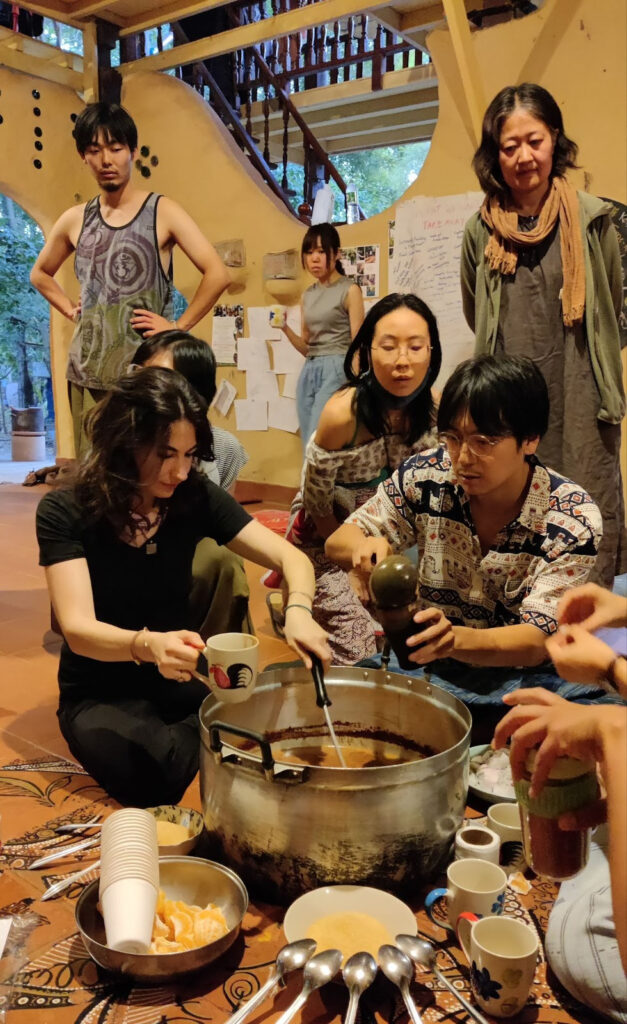
I felt fascinated and bemused by the fact that my early attempts at using chocolate to make friends might actually be paralleled by chemical evidence of cacao’s psychoactive and mood effects. So, I took a deep, deep dive to find out more about cacao/chocolate as a mood elevator and social lubricant. Here’s what I found.
Getting High on Chocolate
Cacao and chocolate really do have psychoactive effects, ranging from stimulation and euphoria to increased attentiveness and executive function, reduced mental fatigue, improved cognitive performance, and even neuroplasticity.
While the psycho-stimulant effect will be immediate (if consuming a large enough quantity), some studies have found that the effects on cognition are immediate, while others have found that it compounds and only becomes noticeable over time with regular consumption.
Even a dark chocolate bar (go for at least 30 grams of 85% or higher cacao content) can have a noticeable effect on improving mood if consumed regularly.
How to Choose and Prepare Cacao
Curious to try for yourself? To feel the most immediate effect, you’ll want to go for minimally processed cacao; although many studies have shown effects from industrially-produced chocolate as well, you will likely get stronger effects from the version that has undergone the least processing.
Many places will market minimally processed cacao as “raw”, but there’s little industry agreement on what that word actually means, as the fermentation process and some parts of processing can generate substantial amounts of heat.
Aside from “raw” cacao, you’ll also find a lot of offers for “ceremonial grade” cacao. From what I can tell, ‘ceremonial cacao’ implies two things: 1.) truly minimal processing and low processing temperatures (although different suppliers of ceremonial cacao might not always agree on precisely what that means) and 2.) price markup for the fancy-sounding lingo.
Some ceremonial cacao brands also use certain varieties of beans that they argue are more nutrient-dense, and many also emphasize the emotional dimension of their work, arguing that the care, mindfulness, and intentionality they deliberately put into their process affects the cacao’s quality.
If you don’t want to pay the markup for ‘ceremonial grade’ cacao, look for cacao paste, cacao mass, or cacao liquor. Protip: those three things are all exactly the same product – cacao beans that are ground into a paste after having been fermented, dried, shelled, and roasted.
Some suppliers also put their cacao paste into a mold, which might make it look more like a chocolate bar.
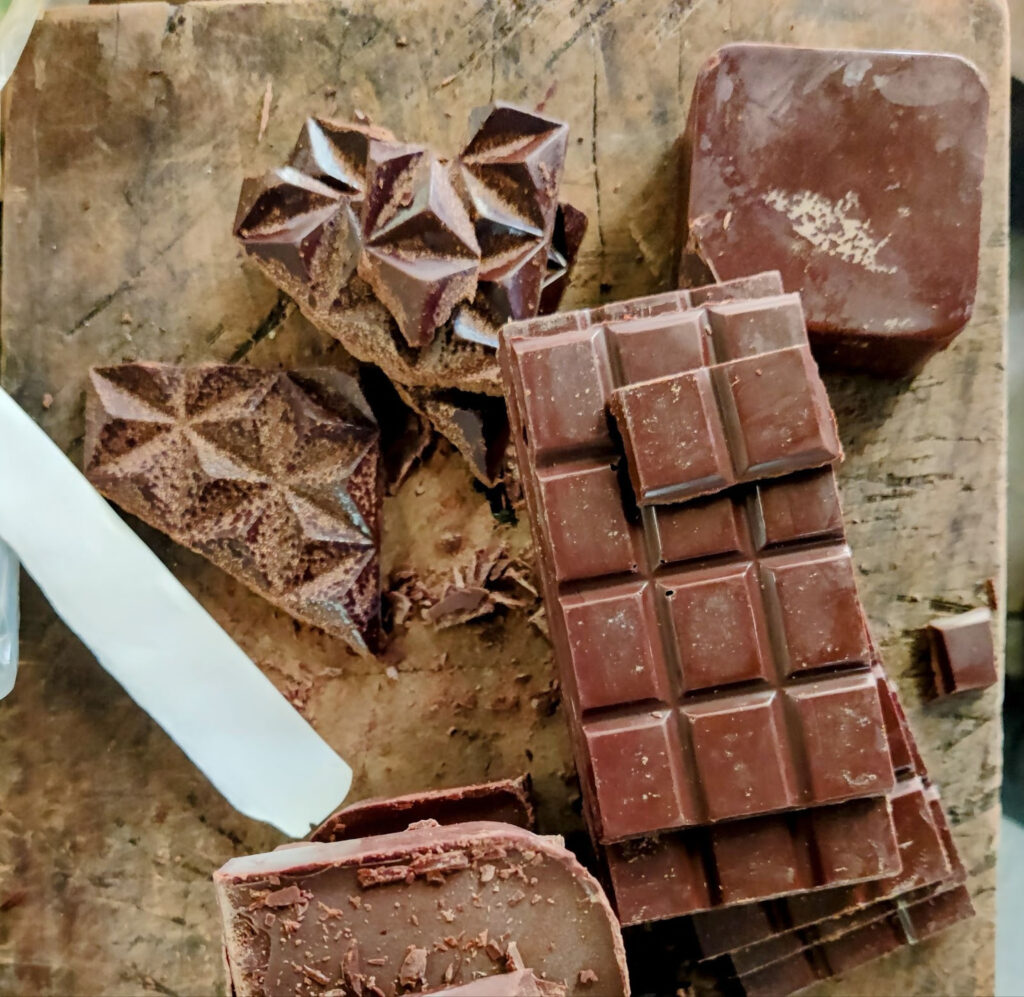
There is a school of thought that says that cacao is more ‘pure’ and will induce stronger effects from its chemical compounds if fermented and roasted at low temperatures that don’t exceed about 110 degrees fahrenheit, so if this is important to you, ask cacao paste suppliers what temperatures are typically reached in processing.
When making hot cacao, absolutely don’t boil it if you want to preserve as many of the active chemical components as possible. Instead, heat up some water just enough to melt the cacao. I also recommend adding lots of spices (ginger, turmeric, cinnamon, nutmeg, clove, cardamom, black pepper), your sweetener of choice, and some coconut milk for extra creaminess.
If you’re sensitive to stimulants, start with 20 grams and wait about 30 minutes to see how you feel. If you don’t feel anything, slowly try a little more.
Most people seem to need around 40-50 grams of cacao to feel an effect, and cacao paste appears to be more likely to produce stronger and more immediately noticeable effects than processed chocolate, although that could be partially because most people don’t usually eat enough chocolate all at once to ingest 40 grams of cacao.
What you feel will also depend on how empty your stomach is. Eating or drinking cacao on an empty stomach will definitely lead to more pronounced effects.
However, if you have too much, you might feel nauseous, anxious, or irritable, so be wary.
Where it gets especially tricky is that there isn’t really any standardization of what amounts of chemical compounds are present in a particular batch of cacao. Chemical makeup can vary by site, cacao bean variety, batch, fermentation time and temperature, processing, and more.
The Science Behind Cacao’s Effects
So, what actually causes the mood effects people feel from cacao and chocolate?
If you go to a cacao ceremony, you might hear the often-repeated claim that anandamide and phenylethylamine are some of the compounds in cacao that make people feel good.
Ananda means ‘bliss’ in Sanskrit, and anandamide is therefore nicknamed ‘the bliss molecule’ – and boy oh boy does that make for sexy marketing.
Phenylthylamine is pretty sexy too. Literally. It’s released when people fall in love and have sex.
The only problem, I discovered, is that these chemicals are only present in small amounts in cacao. The little phenylethylamine there is doesn’t reach the brain when consumed orally, and the anandamide is unstable, which means it probably doesn’t have a strong effect on mood.
But the chemicals that cause those effects simply don’t have catchy-sounding names or associations. Try pronouncing “methylxanthines” or “salsolinol” or “polyphenols” at a party. It’ll totally ruin the vibe.
What we do know is that cacao contains a lot of theobromine, which is a stimulant that lifts the mood and makes you feel more awake. Kind of like caffeine, but without the jitters. It also contains caffeine, but in small quantities.
The polyphenols (a type of antioxidant) in cacao are also thought to be responsible for cacao and chocolate’s beneficial effects on cognition. However, remember that not all chocolate and cacao products are created equal. If you’re really looking to augment your cognitive abilities, search for high-polyphenol dark chocolate or cacao.
Part of the idea behind cacao ceremonies that are interpersonal in focus (not all are) is that effects like elevated mood, stimulation, and increased attentiveness lend themselves well to interpersonal sharing. However, there’s also a historical precedent for the notion of cacao being associated with connection and relationship-building.
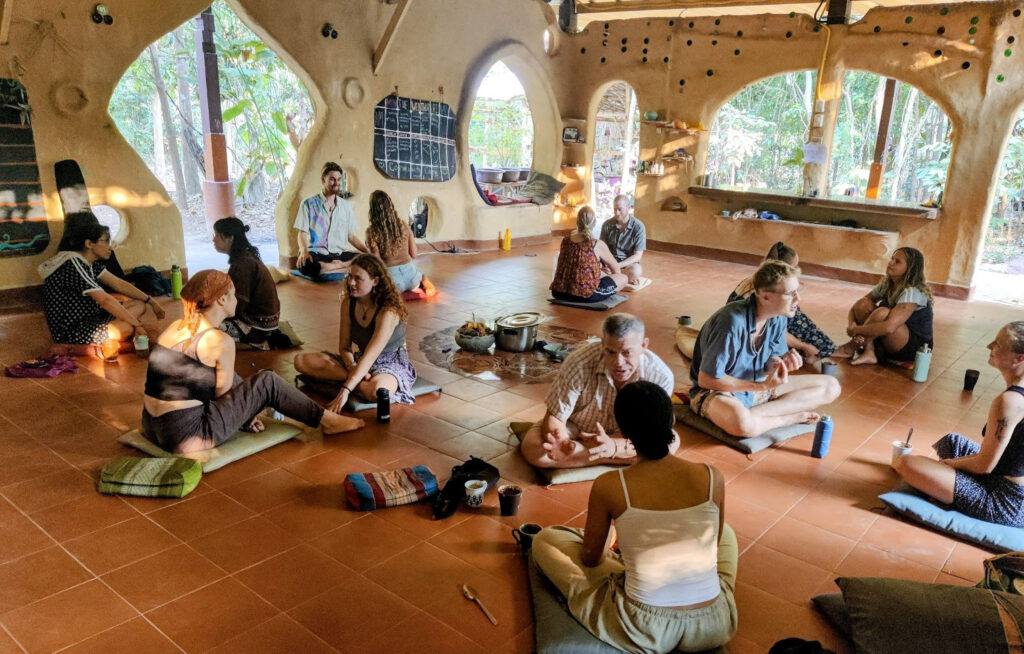
Historical Precedents
Indigenous central and south Americans didn’t need science to tell them that chocolate makes your brain release the feel-good chemicals. They have been using cacao for millenia. In many of those societies, cacao was used in plenty of social contexts for its mood-boosting properties, and as a symbol with which to consecrate social bonds.
Cacao was thought to be so powerful that Aztec human sacrifice victims were even given it before being killed in order to make them joyful until the time of their death. It was also served to help sustain all-night dancing marathons during multi-day feasts (sounds fun, huh?), soothe anxiety, unleash creative energy, and to connect mankind to the divine, to each other, and to ancestors.
People also used to gift it on holidays or for major life events. And, if you thought money didn’t grow on trees, think again – cacao beans were used as currency.
As someone with a childhood precedent for using chocolate for connection, I was absolutely blown away by the knowledge that cacao-consuming OGs used to do the same thing, and that it has chemical properties that elevate mood and cognition and just might help with social bonding.
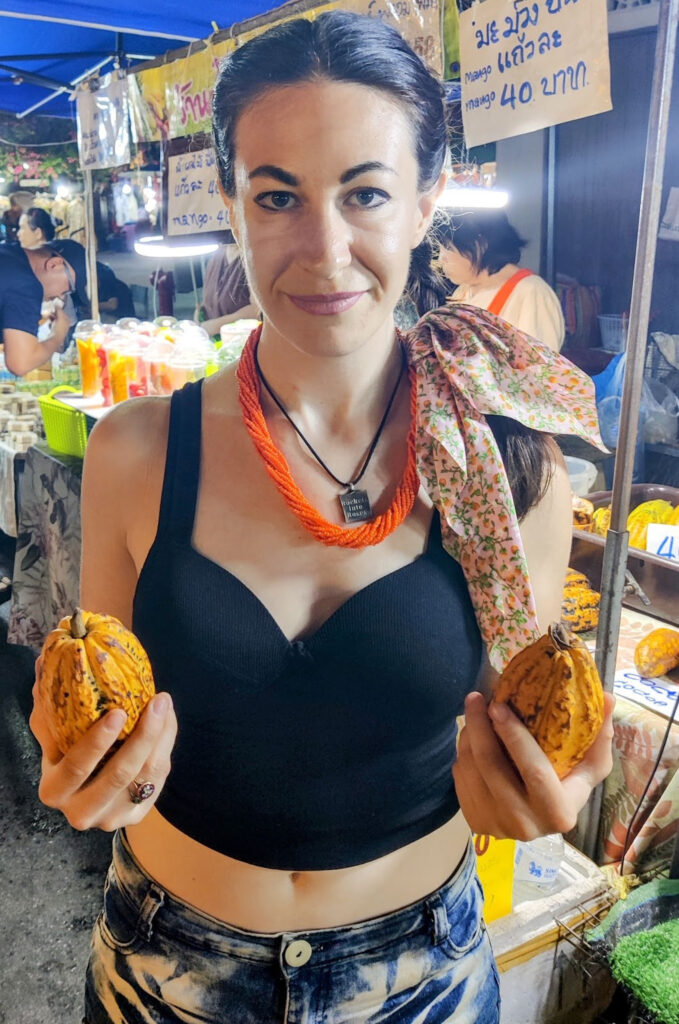
If stories like this make you crave deeper connection over coffee or cacao, join our Uncharted community and meet others who live for meaningful conversations.
The Dark Side of Cacao Ceremonies
However, there’s also a little bit of a dark side to cacao ceremonies.
Not all ceremonies follow the same structure I mentioned above, with partner rotation and sharing; some cacao ceremonies are more spiritual than interpersonal in nature.
The issue arises when non-Indigenous facilitators claim to be sharing rituals from Mayan, Aztec, or other Indigenous cultures without proper cultural understanding or authorization to share.
Look out for ceremonies that are advertised as “ancient (Mayan/Aztec/etc.) cacao ceremon[ies]” while using rituals or New Age practices that are adapted or not actually from Mayan tradition, or those that claim to channel Indigenous spirits without proper cultural context or authorization.
Some are also financially exploitative, charging high prices while commodifying and claiming to represent traditional Indigenous wisdom without giving back to those communities.
Oftentimes, true information about the spiritual and cultural systems from which ritual cacao use first emerged is mixed with untrue or unverified claims (such as those about anandamide and phenylethylamine), or simply taken out of context and presented in a way that simply misses the mark.
I spoke with one Indigenous Guatemalan facilitator who suggested that those of us who don’t come from a cacao-centric lineage should not use the word ‘ceremony’ when offering events centered around cacao, because that word might imply that we’re doing a ritual from a culture that isn’t ours. In reality, we are most likely just borrowing cacao as an agent for mood elevation, self-connection, and social cohesion.
In other words, it’s not inherently disrespectful to use cacao for its psychoactive benefits that can potentially enhance social connection, but it’s important for facilitators to be honest about what they’re doing and skip the borrowed spiritual authority.
So, whether you’re an awkward fifth-grader trying to make friends by sharing chocolate or an adult seeking deeper connection through cacao, it turns out there’s real science behind cacao and chocolate’s social magic.
While the marketing around the specific compounds responsible for the effect is often oversimplified, cacao genuinely contains compounds that can elevate mood, enhance cognitive abilities, and create conditions ripe for meaningful human connection.
Next time you want to have a deep conversation with someone or even enjoy a fun night with friends, try reaching for the cacao instead of the alcohol and see what unfolds.
Why are people suddenly obsessed with cacao ceremonies?
Because they mix science, spirituality, and community in a world where people crave real connection. It feels ancient and modern at the same time, which makes it irresistible.
Can you replace alcohol or coffee with cacao?
Many people do. Cacao gives a clean energy boost and mood lift without the crash or hangover. It’s great for social settings where you want clarity instead of chaos.
How can cacao change the way people connect?
It slows you down and softens your edges. When shared intentionally, it helps people listen more deeply and speak more honestly. That’s what gives it its quiet power.
Does cacao affect creativity or focus?
Yes, cacao’s theobromine and antioxidants can heighten awareness and stimulate creative thinking. Many writers and artists use it as a gentle ritual before working.
Is there a dark side to the cacao trend beyond appropriation?
Yes. The demand for ceremonial cacao has increased prices and created supply pressures. Some small farmers don’t benefit fairly, so ethical sourcing matters as much as spiritual intent.


